Related Research Articles

In Greek mythology, Daedalus was a skillful architect and craftsman, seen as a symbol of wisdom, knowledge and power. He is the father of Icarus, the uncle of Perdix, and possibly also the father of Iapyx. Among his most famous creations are the wooden cow for Pasiphaë, the Labyrinth for King Minos of Crete which imprisoned the Minotaur, and wings that he and his son Icarus used to escape Crete. It was during this escape that Icarus did not heed his father's warnings and flew too close to the sun; the wax holding his wings together melted and Icarus fell to his death.

James Hall Nasmyth was a Scottish engineer, philosopher, artist and inventor famous for his development of the steam hammer. He was the co-founder of Nasmyth, Gaskell and Company manufacturers of machine tools. He retired at the age of 48, and moved to Penshurst, Kent where he developed his hobbies of astronomy and photography.

Oliver Evans was an American inventor, engineer and businessman born in rural Delaware and later rooted commercially in Philadelphia. He was one of the first Americans building steam engines and an advocate of high pressure steam. A pioneer in the fields of automation, materials handling and steam power, Evans was one of the most prolific and influential inventors in the early years of the United States. He left behind a long series of accomplishments, most notably designing and building the first fully automated industrial process, the first high-pressure steam engine, and the first amphibious vehicle and American automobile.

The Panama Canal Railway is a railway line linking the Atlantic Ocean to the Pacific Ocean in Central America. The route stretches 47.6 miles (76.6 km) across the Isthmus of Panama from Colón (Atlantic) to Balboa. Because of the difficult physical conditions of the route and state of technology, the construction was renowned as an international engineering achievement, one that cost US$8 million and the lives of an estimated 5,000 to 10,000 workers. Opened in 1855, the railway preceded the Panama Canal by half a century; the railway was vital in assisting the construction of the canal in the early 1900s. With the opening of the canal, the railroad's route was changed as a result of the creation of Gatun Lake, which flooded part of the original route. Following World War II, the railroad's importance declined and much of it fell into a state of neglect until 1998, when a project to rebuild the railroad to haul intermodal traffic began; the new railroad opened in 2001.

Elisha Graves Otis was an American industrialist, founder of the Otis Elevator Company, and inventor of a safety device that prevents elevators from falling if the hoisting cable fails.

Charles Bulfinch was an early American architect, and has been regarded by many as the first native-born American to practice architecture as a profession.
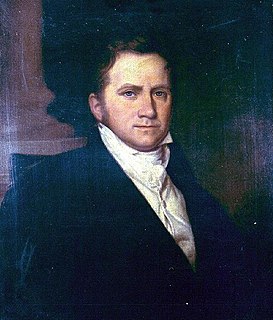
Benjamin Williams Crowninshield served as the United States Secretary of the Navy between 1815 and 1818, during the administrations of Presidents James Madison and James Monroe.
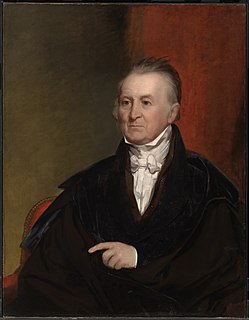
Harrison Gray Otis, was a businessman, lawyer, and politician, becoming one of the most important leaders of the United States' first political party, the Federalists. He was a member of the Otis family.

Jacob Perkins was an American inventor, mechanical engineer and physicist. Born in Newburyport, Massachusetts, Perkins was apprenticed to a goldsmith. He soon made himself known with a variety of useful mechanical inventions and eventually had twenty-one American and nineteen English patents. He is known as the father of the refrigerator. He was elected a Fellow of the American Academy of Arts and Sciences in 1813 and a member of the American Philosophical Society in 1819.
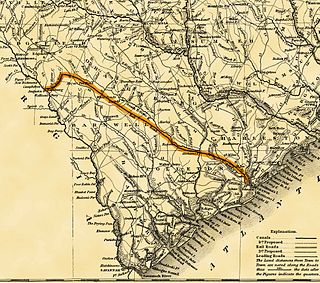
The South Carolina Canal and Rail Road Company was a railroad in South Carolina that operated independently from 1830 to 1844. One of the first railroads in North America to be chartered and constructed, it provided the first steam-powered, scheduled passenger train service in the United States.

A pile driver is a heavy-duty tool used to drive piles into soil to build piers, bridges, cofferdams, and other "pole" supported structures, and patterns of pilings as part of permanent deep foundations for buildings or other structures. Pilings may be made of wood, solid steel, or tubular steel, and may be driven entirely underwater/underground, or remain partially aboveground as elements of a finished structure.

USS R. B. Forbes was a steamer acquired by the Union Navy during the American Civil War. Originally built in either 1845 or 1846, the vessel saw service as a tugboat and briefly a lightship at Boston, Massachusetts. Built by Otis Tufts and named after Robert Bennet Forbes, she was the first iron mercantile vessel built in New England.

The history of steam road vehicles comprises the development of vehicles powered by a steam engine for use on land and independent of rails, whether for conventional road use, such as the steam car and steam waggon, or for agricultural or heavy haulage work, such as the traction engine.

For much of its history, the city of Fall River, Massachusetts has been defined by the rise and fall of its cotton textile industry. From its beginnings as a rural outpost of the Plymouth Colony, the city grew to become the largest textile producing center in the United States during the 19th century, with over one hundred mills in operation by 1920. Even with the demise of local textile productions during the 20th century, there remains a lasting legacy of its impact on the city.

A steam hammer, also called a drop hammer, is an industrial power hammer driven by steam that is used for tasks such as shaping forgings and driving piles. Typically the hammer is attached to a piston that slides within a fixed cylinder, but in some designs the hammer is attached to a cylinder that slides along a fixed piston.

The United States provided many inventions in the time from the Colonial Period to the Gilded Age, which were achieved by inventors who were either native-born or naturalized citizens of the United States. Copyright protection secures a person's right to his or her first-to-invent claim of the original invention in question, highlighted in Article I, Section 8, Clause 8 of the United States Constitution, which gives the following enumerated power to the United States Congress:
To promote the Progress of Science and useful Arts, by securing for limited Times to Authors and Inventors the exclusive Right to their respective Writings and Discoveries.
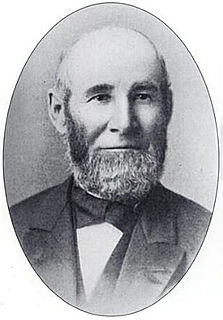
James Otis Curtis was an American shipbuilder who built ships in Medford, Massachusetts. He built wooden ships that were either powered by sail or by screw and steam.

The Roper steam velocipede was a steam-powered velocipede built by inventor Sylvester H. Roper of Roxbury, Boston, Massachusetts, United States sometime from 1867–1869. It is one of three machines which have been called the first motorcycle, along with the Michaux-Perreaux steam velocipede, also dated 1867–1869, and the 1885 Daimler Reitwagen. Historians disagree over whether the Roper or the Michaux-Perreaux came first. Though the Reitwagen came many years later than the two steam cycles, it is often labeled as the "first motorcycle" because there is doubt by some experts whether a steam cycle should meet the definition of a motorcycle.

Sylvester Howard Roper was an American inventor and a pioneering builder of early automobiles and motorcycles from Boston, Massachusetts. In 1863 he built a steam carriage, one of the earliest automobiles. The Roper steam velocipede of 1867–1869 may have been the first motorcycle, for which he was inducted into the Motorcycle Hall of Fame in 2002. He is also the inventor of the shotgun choke and a revolver repeating shotgun.
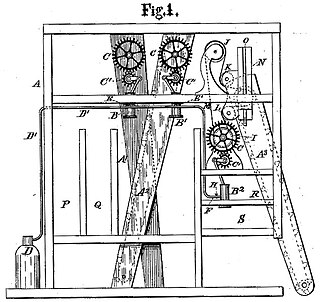
Robert Dunbar was a mechanical engineer. He designed the first steam-powered grain elevator in the world and the majority of the first grain elevators in Buffalo, New York City, and Canada.
References
- ↑ Dennis Hevesi (July 3, 2008). "R. C. Seamans Jr., NASA Figure, Dies at 89". New York Times . Retrieved 2008-07-03.
His great-great-grandfather Otis Tufts constructed the first steam-operated printing press in the United States and invented the steam pile driver.
- ↑ "Otis Tufts". Rootsweb . Retrieved 2008-07-03.
- ↑ "Otis Tufts". Elevator Museum. Retrieved 2008-07-03.